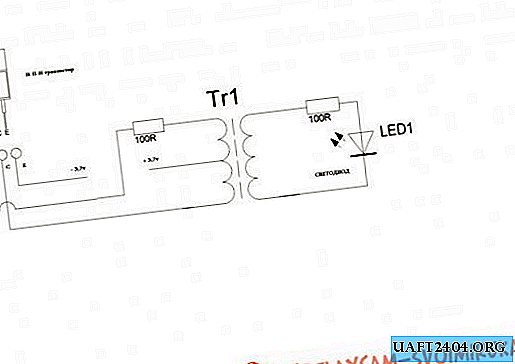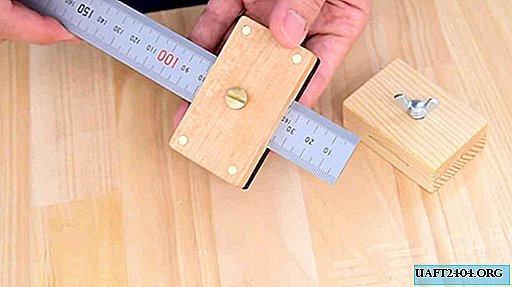
The device is very simple and consists of three components. The main part is a transformer. As a basis, you can take any small-sized transformer from switching power supplies. The transformer consists of two windings. The primary winding consists of 24 turns with a tap from the middle, a wire from 0.2 to 0.8 mm.

The secondary winding consists of 15 turns of wire of the same diameter as the primary. Both windings wound in the same direction.

The LED is connected to the secondary winding through a 100 ohm limiting resistor, the power of the resistor is not important, the polarity of the LED also, since an alternating voltage is generated at the transformer output.
There is also a special nozzle into which the transistor is inserted in compliance with the pinout. For bipolar direct conductivity transistors (type KT 818, KT 814, KT 816, KT 3107, etc.), the base through the base resistor 100 ohm goes to one of the terminals (left or right terminal) of the transformer, the middle point of the transformer (tap) is connected to the plus of the supply, the emitter of the transistor is connected to the minus of the supply, and the collector to the free terminal of the primary winding of the transformer.

For bipolar transistors, reverse conductivity, you just need to change the polarity of the power. The same thing with field-effect transistors, it is important not to confuse the wiring of the transistor. If after supplying power, the LED starts to glow, then the transistor is working, if not, then throw it in the trash, because the device provides 100% accuracy of the transistor. These connections need to be done only once, during the assembly of the device, the nozzle can significantly reduce the test time of the transistor, you just need to insert the transistor into it and apply power.
The device is supposed to be the simplest blocking generator. The power is 3.7 - 6 volts, only one lithium-ion battery from a mobile phone is perfect, but you need to drop out the board from the battery in advance, since this board turns off the power, the current consumption exceeds 800 mA, and our circuit can consume such current in peaks.
The finished device turns out to be quite compact, it can be placed in a compact plastic case, for example, from teak-type candies, and you will have a handheld device for checking transistors for all occasions.











